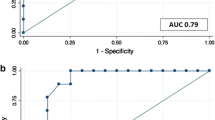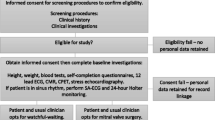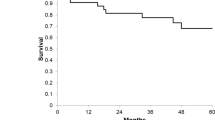Abstract
The impact of mitral regurgitation (MR) from pediatric rheumatic heart disease (RHD) and its effect on left ventricular (LV) remodeling and function following surgical intervention is uncertain. The objective is to explore the impact of mitral valve (MV) surgeries on myocardial mechanics, remodeling and function and identify pre-operative predictors of post-operative dysfunction which may contribute to the optimal timing of intervention. A retrospective review of echocardiographic data was performed of eighteen pediatric patients with RHD (median 9yrs, IQR 6–12) who underwent MV surgery. Echocardiograms pre-operatively and a median of 13.5 months (IQR 10.2–15) following intervention were compared to controls. Pre-operative LV end-diastolic indexed volumes (LVEDVi) were significantly increased compared to controls and remained persistently larger post-operatively. LV ejection fraction (LVEF) (pre 62.6% ± 6.1, post 51.7% ± 9.7, p = 0.002), and global longitudinal strain (GLS) (pre − 24.3 ± 4.1, post − 18.2 ± 2.6, p < 0.001) decreased post-operatively at mid-term follow-up. Pre-operative LVEDVi was a significant predictor of post-operative LVEF, with a cut-off of ≥ 102 ml/m2 associated with LV dysfunction (LVEF < 55%; sensitivity 70%, specificity 75%). Pre-operative LVEDVi also negatively correlated with GLS (r = − 0.58, p = 0.01). LV dimensions and volumes remain persistently larger than controls while LV function decreases post-surgical alleviation of MR in paediatric RHD. Pre-operative LVEDVi predicted post-operative LV dysfunction and utilising LV indexed volumes in directing timing of surgical planning should be considered. Further studies are required to investigate whether timely alleviation of MR before significant LV dilatation and remodeling occur may substantially prevent LV dysfunction and improve outcomes.




Similar content being viewed by others
References
Seckeler MD, Hoke TR (2011) The worldwide epidemiology of acute rheumatic fever and rheumatic heart disease. Clin Epidemiol 3:67
RHDAustralia (ARF/RHD writing group). (2020) The 2020 Australian guideline for prevention, diagnosis and management of acute rheumatic fever and rheumatic heart disease (3.2 edition, March 2022)
Health AIo, Welfare (2013) Rheumatic heart disease and acute rheumatic fever in Australia: 1996-2012. AIHW, Canberra
Yeong M, Silbery M, Finucane K, Wilson NJ, Gentles TL (2015) Mitral valve geometry in paediatric rheumatic mitral regurgitation. Pediatr Cardiol 36(4):827–834
Gentles TL, Finucane AK, Remenyi B, Kerr AR, Wilson NJ (2015) Ventricular function before and after surgery for isolated and combined regurgitation in the young. Ann Thorac Surg 100(4):1383–1389
Li X, Bao K, Zhu R, Qi Q, Liu S, Li H et al (2019) Predictors of early left ventricular dysfunction after mitral valve replacement for rheumatic valvular disease. J Card Surg 34(11):1185–1193
Varghese R, Itagaki S, Anyanwu AC, Milla F, Adams DH (2014) Predicting early left ventricular dysfunction after mitral valve reconstruction: the effect of atrial fibrillation and pulmonary hypertension. J Thorac Cardiovasc Surg 148(2):422–427
Johnson JT, Eckhauser AW, Pinto NM, Weng HY, Minich LL, Tani LY (2015) Indications for intervention in asymptomatic children with chronic mitral regurgitation. Pediatr Cardiol 36(2):417–422
American College of Cardiology; American Heart Association Task Force on Practice Guidelines (Writing Committee to revise the 1998 guidelines for the management of patients with valvular heart disease); Society of Cardiovascular Anesthesiologists, Bonow RO, Carabello BA, Chatterjee K et al (2006) ACC/AHA 2006 guidelines for the management of patients with valvular heart disease: a report of the American College of Cardiology/American Heart Association Task Force on Practice Guidelines (writing Committee to Revise the 1998 guidelines for the management of patients with valvular heart disease) developed in collaboration with the Society of Cardiovascular Anesthesiologists endorsed by the Society for Cardiovascular Angiography and Interventions and the Society of Thoracic Surgeons. J Am Coll Cardiol 48(3):1–148
Arunamata A, Selamet Tierney ES, Tacy TA, Punn R (2015) Echocardiographic measures associated with early postsurgical myocardial dysfunction in pediatric patients with mitral valve regurgitation. J Am Soc Echocardiogr 28(3):284–293
Gentles TL, French JK, Zeng I, Milsom PF, Finucane AK, Wilson NJ (2012) Normalized end-systolic volume and pre-load reserve predict ventricular dysfunction following surgery for aortic regurgitation independent of body size. JACC Cardiovasc Imaging 5(6):626–633
Finucane K, Wilson N (2013) Priorities in cardiac surgery for rheumatic heart disease. Glob Heart 8(3):213–220
Detaint D, Messika-Zeitoun D, Maalouf J, Tribouilloy C, Mahoney DW, Tajik AJ et al (2008) Quantitative echocardiographic determinants of clinical outcome in asymptomatic patients with aortic regurgitation: a prospective study. JACC Cardiovasc Imaging 1(1):1–11
Wisenbaugh T, Skudicky D, Sareli P (1994) Prediction of outcome after valve replacement for rheumatic mitral regurgitation in the era of chordal preservation. Circulation 89(1):191–197
Remenyi B, Webb R, Gentles T, Russell P, Finucane K, Lee M et al (2013) Improved long-term survival for rheumatic mitral valve repair compared to replacement in the young. World Journal for Pediatric and Congenital Heart Surgery 4(2):155–164
Hillman ND, Tani LY, Veasy LG, Lambert LL, Di Russo GB, Doty DB et al (2004) Current status of surgery for rheumatic carditis in children. Ann Thorac Surg 78(4):1403–1408
Talwar S, Rajesh MR, Subramanian A, Saxena A, Kumar AS (2005) Mitral valve repair in children with rheumatic heart disease. J Thorac Cardiovasc Surg 129(4):875–879
Lopez L, Colan SD, Frommelt PC, Ensing GJ, Kendall K, Younoszai AK et al (2010) Recommendations for quantification methods during the performance of a pediatric echocardiogram: a report from the pediatric measurements writing group of the American society of echocardiography pediatric and congenital heart disease council. J Am Soc Echocardiogr 23(5):465–495
Remenyi B, Wilson N, Steer A, Ferreira B, Kado J, Kumar K et al (2012) World Heart Federation criteria for echocardiographic diagnosis of rheumatic heart disease–an evidence-based guideline. Nat Rev Cardiol 9(5):297–309
Ross J Jr (1981) Left ventricular function and the timing of surgical treatment in valvular heart disease. Ann Intern Med 94(4 pt 1):498–504
Harkness A, Ring L, Augustine DX, Oxborough D, Robinson S, Sharma V (2020) Normal reference intervals for cardiac dimensions and function for use in echocardiographic practice: a guideline from the British society of echocardiography. Echo Res Pract 7(1):G1–G18
Mascle S, Schnell F, Thebault C, Corbineau H, Laurent M, Hamonic S et al (2012) Predictive value of global longitudinal strain in a surgical population of organic mitral regurgitation. J Am Soc Echocardiogr 25(7):766–772
Boston Children's Hospital Heart Centre Z-score Calculator: Boston Children's Hospital 2015 [updated 2021. https://zscore.chboston.org/Home/About
Zoghbi WA, Enriquez-Sarano M, Foster E, Grayburn PA, Kraft CD, Levine RA et al (2003) Recommendations for evaluation of the severity of native valvular regurgitation with two-dimensional and Doppler echocardiography. J Am Soc Echocardiogr 16(7):777–802
Gaasch WH, Meyer TE (2008) Left ventricular response to mitral regurgitation: implications for management. Circulation 118(22):2298–2303
Ross J Jr (1985) Afterload mismatch in aortic and mitral valve disease: implications for surgical therapy. J Am Coll Cardiol 5(4):811–826
Matsumura T, Ohtaki E, Tanaka K, Misu K, Tobaru T, Asano R et al (2003) Echocardiographic prediction ofleft ventricular dysfunction aftermitral valve repair for mitral regurgitation as anindicator to decide the optimal timing of repair. J Am Coll Cardiol 42(3):458–463
Nishimura RA, Vahanian A, Eleid MF, Mack MJ (2016) Mitral valve disease—current management and future challenges. Lancet 387(10025):1324–1334
Essop MR, Wisenbaugh TW, Sareli PE (1994) Discordant changes in left ventricular performance after valve replacement for isolated rheumatic mitral regurgitation versus combined mitral and aortic regurgitation in teenagers. Am J Cardiol 73(12):910–914
Skudicky D, Essop MR, Sareli P (1997) Time-related changes in left ventricular function after double valve replacement for combined aortic and mitral regurgitation in a young rheumatic population: Predictors of postoperative left ventricular performance and role of chordal preservation. Circulation 95(4):899–904
Krishna Moorthy PS, Sivalingam S, Dillon J, Kong PK, Yakub MA (2019) Is it worth repairing rheumatic mitral valve disease in children? Long-term outcomes of an aggressive approach to rheumatic mitral valve repair compared to replacement in young patients. Interact Cardiovasc Thorac Surg 28(2):191–198
McGurty D, Remenyi B, Cheung M, Engelman D, Zannino D, Milne C et al (2019) Outcomes after rheumatic mitral valve repair in children. Ann Thorac Surg 108(3):792–797
Kalangos A, Christenson JT, Beghetti M, Cikirikcioglu M, Kamentsidis D, Aggoun Y (2008) Mitral valve repair for rheumatic valve disease in children: midterm results and impact of the use of a biodegradable mitral ring. Ann Thorac Surg 86(1):161–169
Witschey WR, Zhang D, Contijoch F, McGarvey JR, Lee M, Takebayashi S et al (2015) the influence of mitral annuloplasty on left ventricular flow dynamics. Ann Thorac Surg 100(1):114–121
Ren J-F, Aksut S, Lighty GW Jr, Vigilante GJ, Sink JD, Segal BL et al (1996) Mitral valve repair is superior to valve replacement for the early preservation of cardiac function: relation of ventricular geometry to function. Am Heart J 131(5):974–981
Lee C, Lee CH, Kwak JG, Park CS, Kim SJ, Song JY et al (2010) Long-term results after mitral valve repair in children. Eur J Cardiothorac Surg 37(2):267–272
Galli E, Lancellotti P, Sengupta PP, Donal E (2014) LV mechanics in mitral and aortic valve diseases: value of functional assessment beyond ejection fraction. JACC Cardiovasc Imaging 7(11):1151–1166
Colquitt JL, Pignatelli RH (2016) Strain imaging: the emergence of speckle tracking echocardiography into clinical pediatric cardiology. Congenit Heart Dis 11(2):199–207
Rusinaru D, Tribouilloy C, Grigioni F, Avierinos JF, Suri RM, Barbieri A et al (2011) Left atrial size is a potent predictor of mortality in mitral regurgitation due to flail leaflets: results from a large international multicenter study. Circulation 4(5):473–81
Dujardin KS, Enriquez-Sarano M, Rossi A, Bailey KR, Seward JB (1997) Echocardiographic assessment of left ventricular remodeling: are left ventricular diameters suitable tools? J Am Coll Cardiol 30(6):1534–1541
Bijvoet G, Teske A, Chamuleau S, Hart E, Jansen R, Schaap J (2020) Global longitudinal strain to predict left ventricular dysfunction in asymptomatic patients with severe mitral valve regurgitation: literature review. Neth Hear J 28(2):63–72
Marwick TH (2006) Measurement of strain and strain rate by echocardiography: ready for prime time? J Am Coll Cardiol 47(7):1313–1327
Smiseth OA, Torp H, Opdahl A, Haugaa KH, Urheim S (2016) Myocardial strain imaging: how useful is it in clinical decision making? Eur Heart J 37(15):1196–1207
Sobhy R, Samir M, Abdelmohsen G, Ibrahim H, Abd El Rahman MY, Abdelrahman N et al (2019) Subtle myocardial dysfunction and fibrosis in children with rheumatic heart disease: insight from 3D echocardiography, 3D speckle tracking and cardiac magnetic resonance imaging. Pediatr Cardiol 40(3):518–25
Goldsmith IR, Lip GY, Patel RL (2001) A prospective study of changes in the quality of life of patients following mitral valve repair and replacement. Eur J Cardiothorac Surg 20(5):949–955
Funding
There is no funding for this study.
Author information
Authors and Affiliations
Corresponding author
Ethics declarations
Conflict of interest
The authors disclose no conflict of interest financial or otherwise. This research and manuscript preparation did not receive any specific grants or other support from funding agencies in the public, commercial, or not-for-profit sectors.
Ethical approval
Ethical approval for this study was granted by the Child and Adolescent Health Service Human Research Ethics Committee (PRN: RGS0000003471).
Additional information
Publisher's Note
Springer Nature remains neutral with regard to jurisdictional claims in published maps and institutional affiliations.
Rights and permissions
About this article
Cite this article
Tarca, A.J., Causer, L.E., Maslin, K.L. et al. Impact of mitral regurgitation on left ventricular remodeling and function in children with rheumatic heart disease. Int J Cardiovasc Imaging 38, 2667–2676 (2022). https://doi.org/10.1007/s10554-022-02678-w
Received:
Accepted:
Published:
Issue Date:
DOI: https://doi.org/10.1007/s10554-022-02678-w




